20 years at CMS: Jonny Baker’s Dozen
Thirteen nuggets from our Britain Hub director’s two decades of pioneering with CMS
“I hope for a conversation where we are curious, exploring, theologising, sharing practice and learning from it and one another.” – Jonny Baker, Britain Hub mission director at Church Mission Society (Jeremy Woodham/Church Mission Society)
Jonny Baker, our Britain Hub mission director, recently clocked up 20 years working with Church Mission Society. He reflects on 13 things that have shaped his own journey and mission in Britain in that time.
1. Gold!
The reason I came to CMS was to steal the gold!
Initially I think I was interested in the gold around the process and skills and imagination and theology of crossing a culture, which still does interest me.
But over time I have realised that the real gold is when those on the inside of a culture begin to shape faith and theologise and articulate and nurture faith for themselves, freed from the foreign trappings which are so easily stumbling blocks. They do it from the inside as John Taylor would have said. Then the mutual exchange and learning across and between cultures is so valuable.
2. Emerging church
My very first day at CMS I was picked up by my new boss Paul Thaxter and taken to a meeting in Nottingham to discuss the creation of a web site to try and get a sense of the new things emerging in and around the edges of the church. This subsequently became emergingchurch.info
It was an exciting time – genuine newness, experimentation, and connections across the world for those in Western contexts at least – Canada, New Zealand, Australia, USA, Denmark and a few others joined in. The friendships across the world were so enjoyable and they were enabled really because it coincided with so much opportunity to connect through digital technologies, blogging and the like.
CMS brought a bit of a global flavour to emergingchurch.info with stories of a bus stop church in Kenya and Jacob Isaacs’ cafe in Bangalore. The risk of it was always it wasn’t missional enough – it could easily be an internal conversation but I think my boss at the time kept challenging and pushing outwards which was healthy.
Fast forward to 2022 and the Church of England self-described as emerging church in terms of where it is headed.
3. Blah…
Conversation has been at the heart of all the explorations and adventures in mission I have been part of.

Initially that was through email lists, then websites, blogs, social media and so forth. Back in 2003 we started a series of events called blah… The first was ‘Liquid Church on Tap’ with Pete Ward.
The thing about blah… that was so valuable was it was a conversation – people sparking off ideas and sharing them.
I hope that everything now is still a conversation where we are curious, exploring, theologising, sharing practice and learning from it and one another. We still host an annual pioneer conversations day, so in many ways blah… has never really stopped.
4. New forms
My memory of dates is somewhat hazy but Greenbelt festival played host to significant creative engagement with new forms of worship and church. I picked up the baton from Doug Gay in the early 2000s around the time Greenbelt landed at Cheltenham racecourse and took on coordinating the New Forms venues as a volunteer with help from a host of other people – Sue Wallace, Gayle Findlay, Sonia Mainstone, Ben Edson, Ian Mobsby and others.

CMS were gracious enough to let me do this as part of my job in those early years.
I think we could do with making visible new forms still. I think it would be valuable to see and hear more stories from the edges. There are a quite a few in and around the edges of pioneering – new forms such as Revs, Sacred Bean Coffee, church gathered around boxing, Mountain Pilgrims, The Table and so on. There must be lots more.
5. Worship tricks
As well as being at CMS 20 years I had another 20th anniversary which somehow passed me by. That is how long I have been writing a blog.
One of the first things I started was a series of ‘worship tricks’ – creative ideas, installations, rituals, liturgy, videos that I came across that could be shared.
Some of the worship tricks are dated but the delight of those creative moments and offerings is still there and I hope to stumble across many more going forward.
I long for more people to have the courage to create. I have taught the worship module for pioneers at CMS and that has been a great joy, seeing them explore what worship could look and be like in the communities they are among.
I have always thought the church’s liturgy should be open source – downloadable, able to be remixed and uploaded for others to rework.
The availability of communication technology has certainly made that possible, though on balance I find the church still seems to prefer control to trusting its people and the creative process.
6. Mission Shaped Church and Fresh Expressions
Looking back on my time at CMS it was couple of years in that Mission Shaped Church was published. This was a Church of England and Methodist report published in 2004 which was in response to the wave of new things bubbling up round the edges of the church.
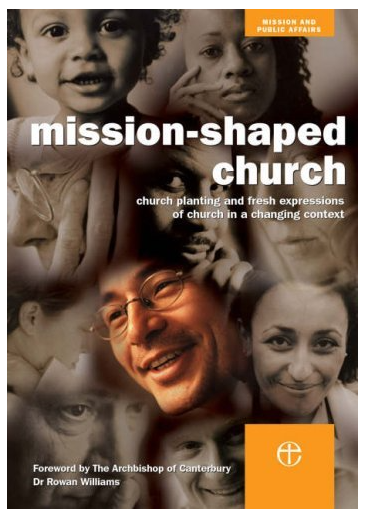
Two members of CMS were on the group that produced the report – Chris Neal and Gill Poole – and I am proud that CMS were involved in what was a seminal report.
It is very rare that a church report becomes a best seller but it caught the moment and maybe even a wave of the Spirit! It coined a new term – fresh expressions of church.
In July 2019 it was 15 years on from the Mission Shaped Church report and at general synod it was reported that this had been the single most effective thing the church had done to reach genuinely new people (at least for a long time).
If ‘church’ is what happens when people encounter the risen Jesus and commit themselves to sustaining and deepening that encounter in their encounter with each other, there is plenty of theological room for diversity of rhythm and style, so long as we have ways of identifying the same living Christ at the heart of every expression of Christian life in common.
Rowan Williams (from foreword to Mission Shaped Church)
Several people used language of it being ‘embedded’ as if to say, we’ve done that – which I think was pretty naive. My own take is that if you leave something like fresh expressions to the structural it will likely slide back into more internal agendas. You need those groups with particular focus and energy to help and continue to call the church to its edges.
The good news is that all sorts of newness has bubbled up and multiplied. The church is most definitely looser round the edges. And CMS and Church Army and other groups are still here and passionate about and involved in encouraging the mission of the church.
7. Pioneer ministry
One of the recommendations in Mission Shaped Church was that the church recognise that the kind of person starting these fresh expressions of church had a different skill set and way of looking and being in the world – a different gift. The report used two descriptions for this – pioneer ministry and missional entrepreneurship.

Quite quickly the Church of England created a new designation for ministry whereby you could be recognised and ordained as a pioneer. This was pretty encouraging and surprising.
One of the other recommendations was that training for pioneers should be done through the lens of cross-cultural mission. And after a couple of years the then head of ministry approached CMS to ask if we could design some training because in his view what was being done was frustrating pioneers and wasn’t really fit for purpose.
To cut a long story short, I did and that request took over my life for the next decade.
We started in 2010 with training independent students and then two years later added in training ordinands alongside them. Our first prospectus cover was a road going into the fog – that felt pretty apt.
8. Church planting
In 2003 a year-long course called re:source began. It was one year course where participant visited six different contexts over weekends to learn from what was happening on the ground.
Bob and Mary Hopkins of Anglican Church Planting Initiatives used to teach at re:source on a range of models and dynamics and how that affected what you did – what was the context, what size of team, did you start with church culture and worship or with the local culture…?
There was a sense that Western culture needed an approach informed by the best of cross-cultural mission that grew indigenous or contextual expressions of church. CMS were so on board with this that we contributed to funding Bob and Mary and they were part of the same team as me for several years.
I have been and still am very much engaged with church planting in the emerging culture. There is so much more I could say about this and why the language has become contested or lots of people have abandoned it. But I think it probably needs recovering and/or reclaiming or at least we need a generous and wide range of approaches going forward much like that mapped by ACPI and Fresh Expressions – did I hear someone say mixed ecology?!
9. Red tape
The Church of England and other denominations are challenging spaces in which to advocate for and make pathways for newness.
Once CMS had been invited to design a training pathway for pioneers I remember the challenge of trying to persuade the powers that be at the time that what we did was trustworthy and I nearly drowned in red tape.

I am enjoying reading Holy Anarchy at the moment which is from a Congregationalist Graham Adams, who like the United Reformed Church are non-conformist and have a tradition of dissent. It’s made we wonder how I have survived this long in the Church of England as I identify strongly with dissent. But it is my tribe or my tradition where I think I’ll continue to do my best to navigate change, red tape and no doubt continue to get exasperated on a regular basis!
10. Doing the imaginative work
I quickly found out that if you look to the usual sources through which leaders are trained, the language and forms from one era or culture don’t make sense in the new. So the last 20 years have involved a lot of conversations, reading, writing, thinking, theologising ourselves – trying to find resources and ideas that will resource a different kind of imagination and practice.
One area of reading and reflecting and noticing is in the direction of artists and writers and filmmakers who catch the zeitgeist and describe what’s going on in the wider cultural space. There is so much to be learned there. It’s basic mission practice to read the culture.
Another is finding the treasures from the tradition that seem to help break it open afresh in the present. There is a rich vein of this but you have to dig them out.
For me in particular this has included an engagement with CMS’s own history, stories and especially some of its prophets – I am thinking of the likes of John Taylor and Max Warren as well as stories of cross-cultural mission and contextual, local and intercultural theologies from round the world. I have definitely found some of the gold I was seeking which was a fund for my own imagination. I have returned again and again to the notion that mission is ‘an adventure of the imagination’ which is how Taylor describes it in The Primal Vision.
11. The blog post I never wrote
I was fascinated by the history of mission in New Zealand when I visited in 2020 just before lockdown and blogged a series of reflections then. If you look at the last post I say that will write one more post with some reflections on post-colonial mission. I haven’t yet been able to write it! I think on reflection it’s probably not mine to write.
Various things have really helped me in this quest or conversation.
One is the significance of border-crossing friendships. I try to work out of friendship. My own way of working across cultures has always been to share what we are doing and learning in the UK and hear the same about another context and see where there is synergy. I have particularly enjoyed that way of working with friends in South Korea where a pioneer hub has grown that is entirely Korean in its organising and leading and everything else.
Another is reading voices from the margins – I have loved the exposure to theologies and practice from the majority world and the realisation that whatever Western theology is or isn’t, it is just one local theology that has sadly universalised its take far too often.
As well as thinking and reflecting and learning you need new practice. We have to find ways to act into new thinking rather than the other way round. Practice has always been my passion. And we need plenty of grace on the way, permission to get it wrong as we seek new paths. The African Christianity route through the master’s degree at CMS has been a small adventure in practice we are making together with others at CMS, led by Harvey Kwiyani, and I hope it can grow (and something similar be done in other diasporas).
Some thinkers want to lose the concept of “mission” altogether. I would rather continue the quest to refound it in ways that are good for the earth and all peoples. I hope that is possible.
12. For goodness’ sake
I like the idea of good. At some basic level we need good in the world. To participate in mission is to join in the healing of all things. It’s about good – good news, good communities, good neighbourhoods, good life, good business, good relationships, good for the planet.
That’s why missional entrepreneurship is a thread that has woven through my 20 years at CMS.
One of the reasons I like mission as a way of framing is that the ‘why’ or purpose is for good in the world. Sometimes I find that the ‘why’ in the church can seem like it’s church i.e. it’s very focused on itself. But the point of church is for the good of the world not just as an end in itself.
The other way mission tends to get collapsed or reduced is into evangelism – sharing the story of Jesus Christ with people. It’s a great story and I have no issue at all with that. But in a post-Christian culture like Britain it seems a no brainer that if you want to have anyone to listen to that story you have got to actually be good news and not just talk about it.
13. True north
A few years into Pioneer Mission Training at CMS, I was amazed at how wonderful it seemed – it felt like something precious was going on. Religious communities sometimes talk about a charism or gift that is at the heart of what they are about.
I went on a retreat in 2015 and wrote in my journal what I thought the facets of the charism we were seeing at CMS with pioneers might be.
I called it ‘true north’ – true north being a metaphor for God’s mission, which is the big orienting factor, joining in with the healing of all things. And then I came up with nine facets of that gift. Several years on I think they still name something good.
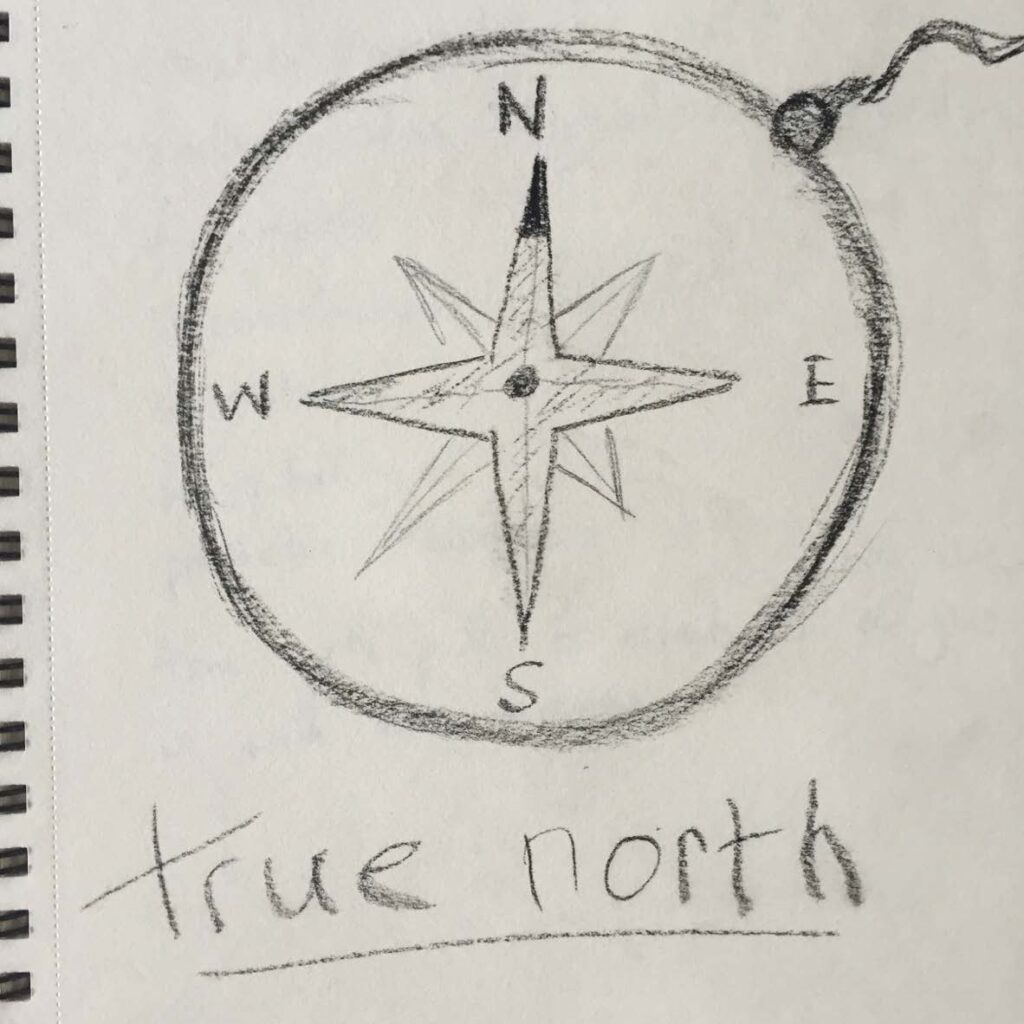
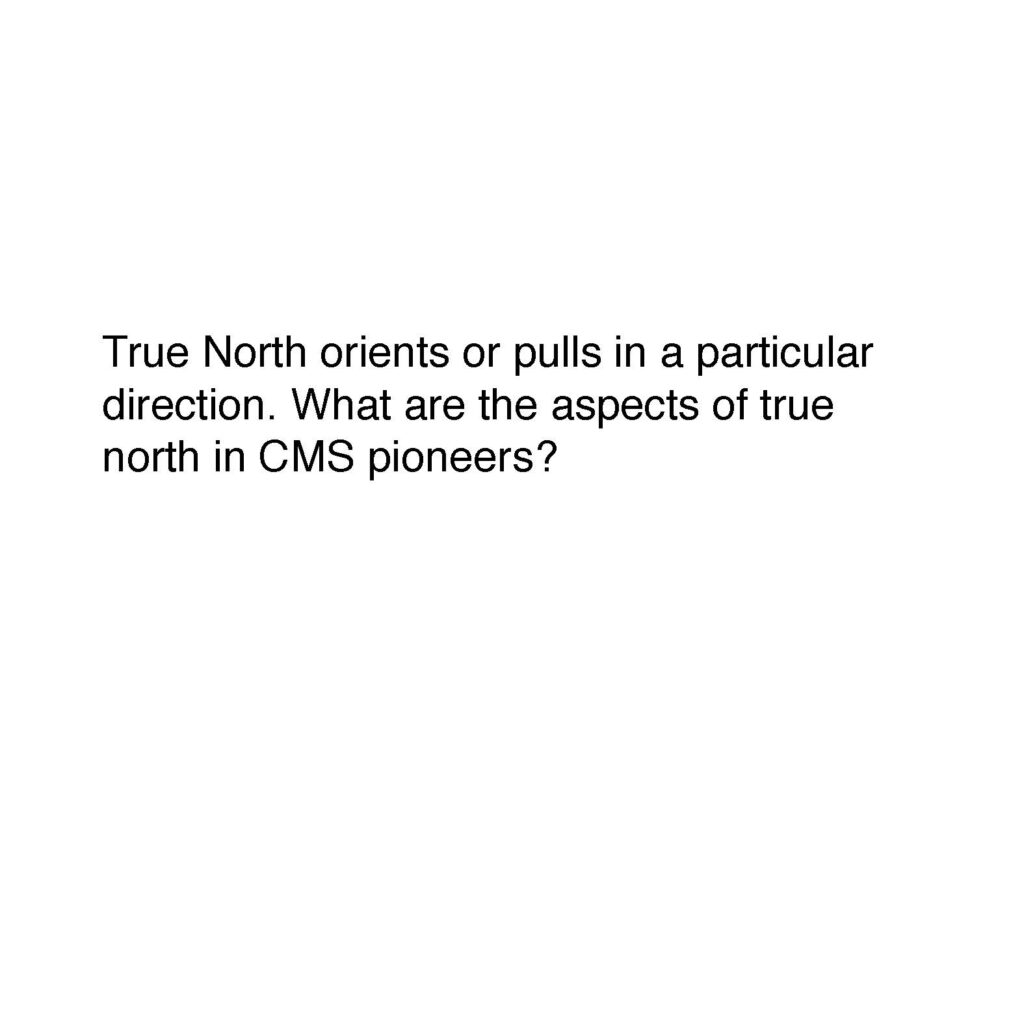
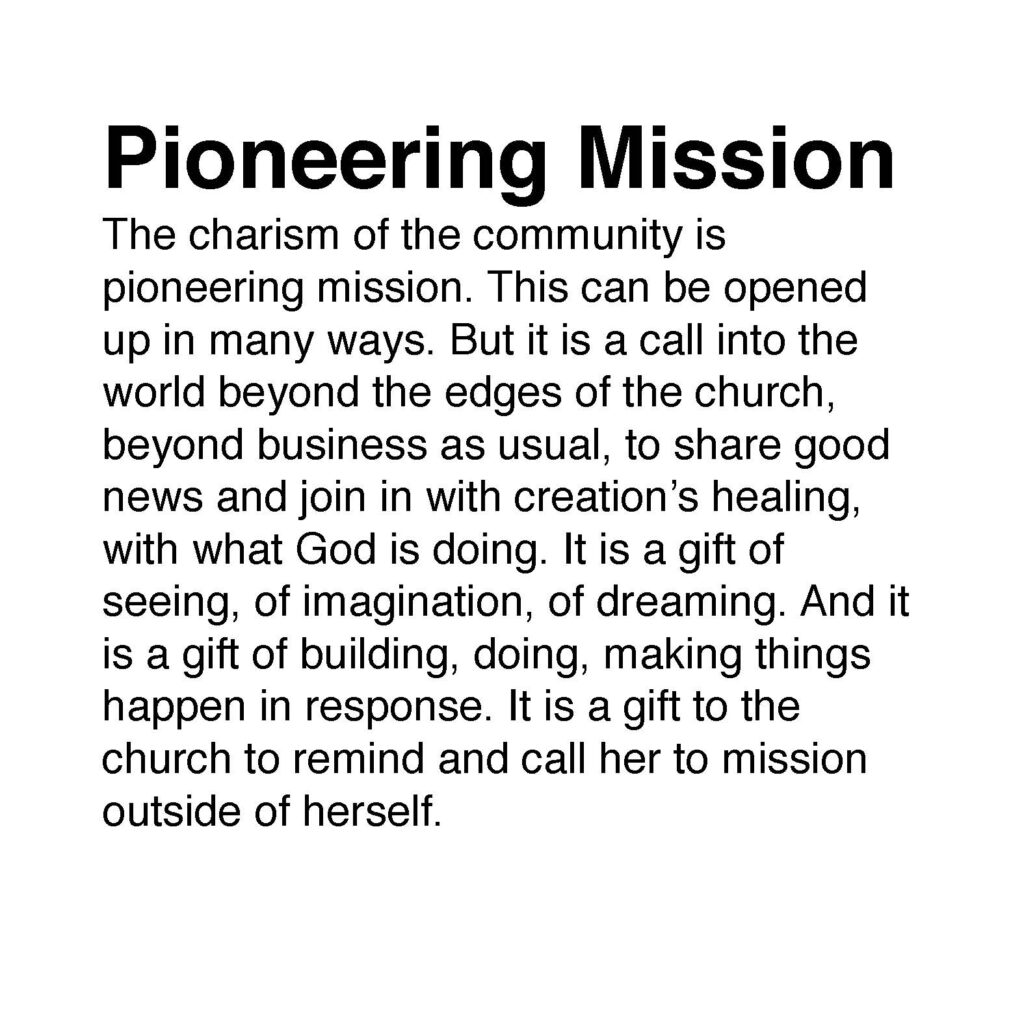
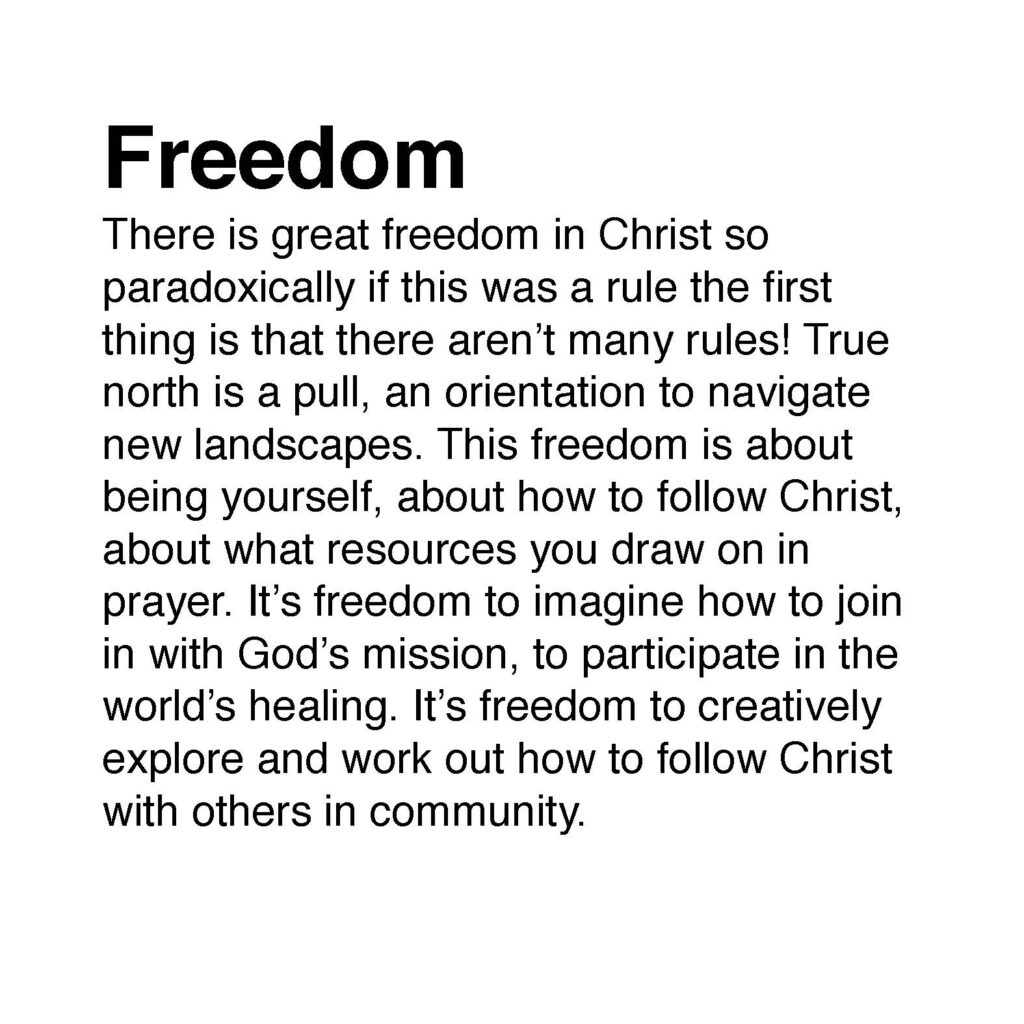
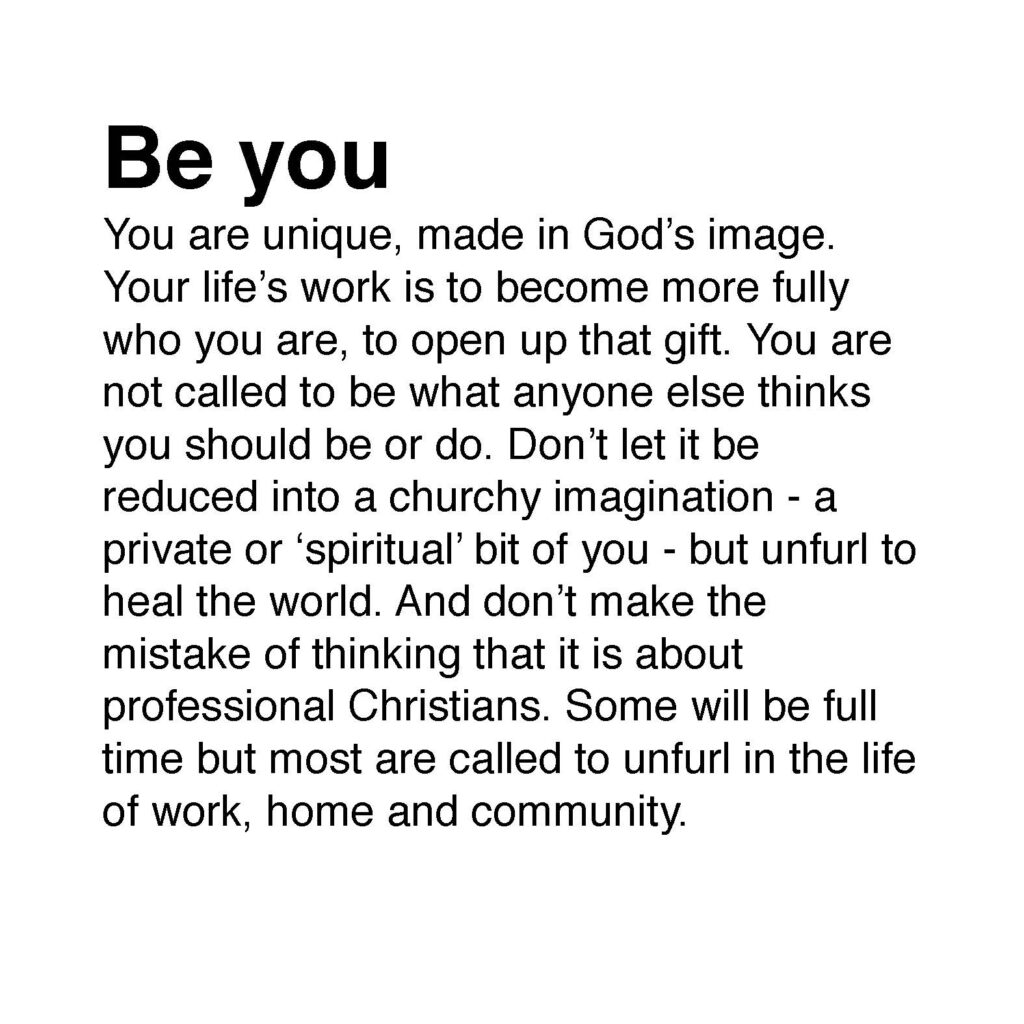
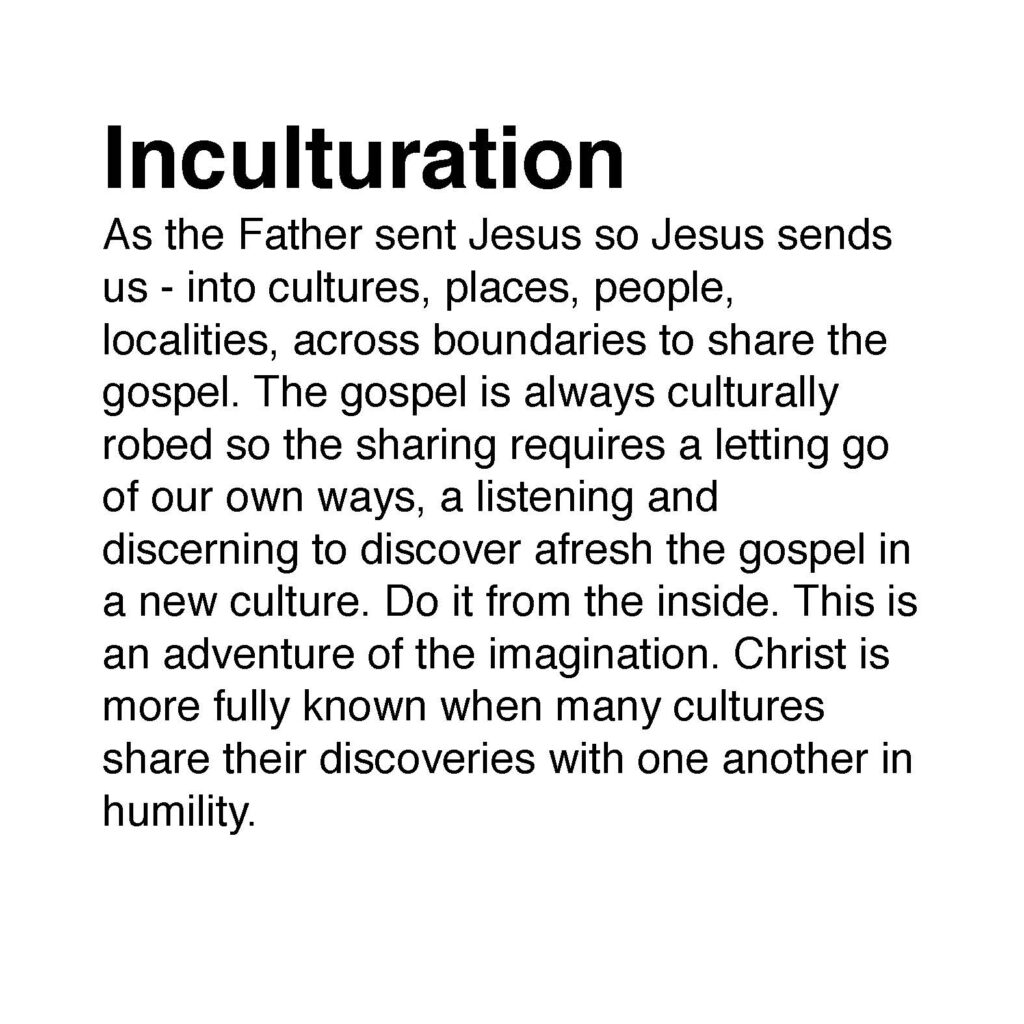
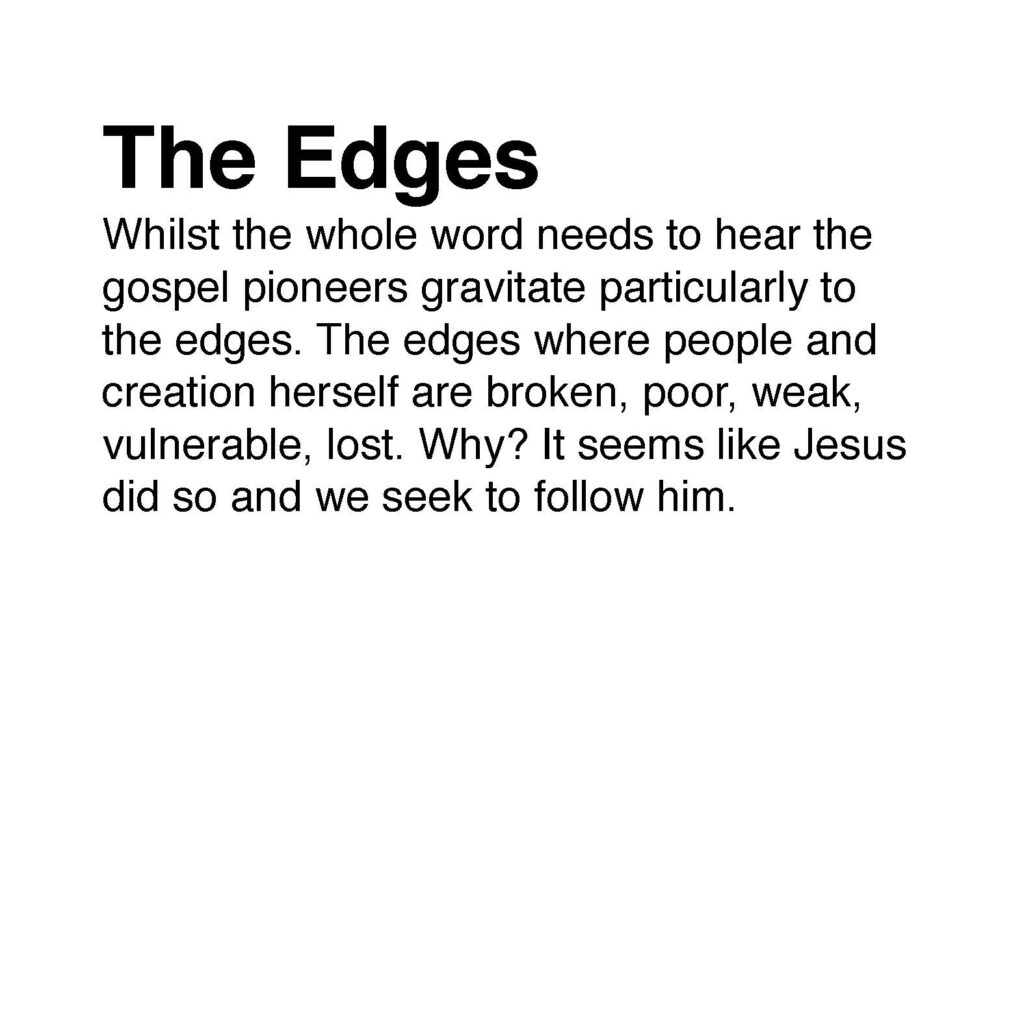
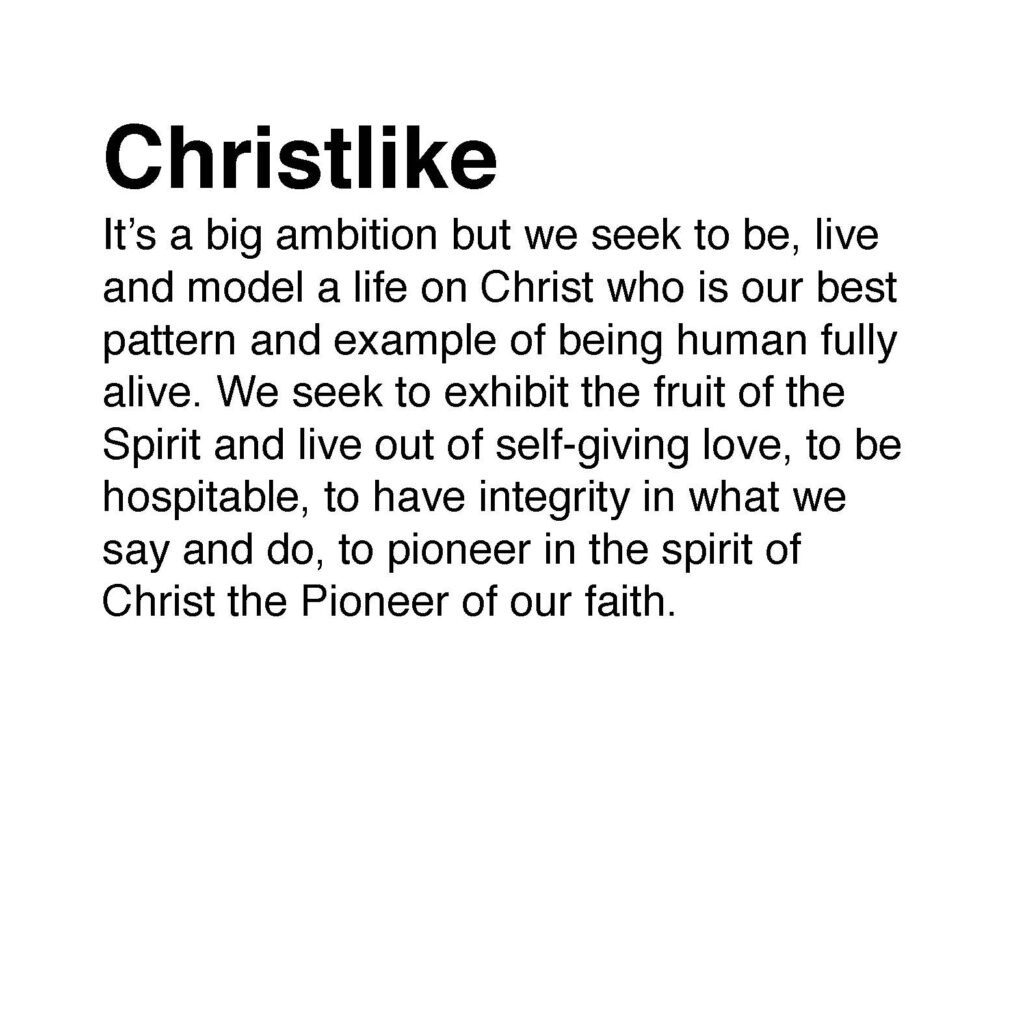
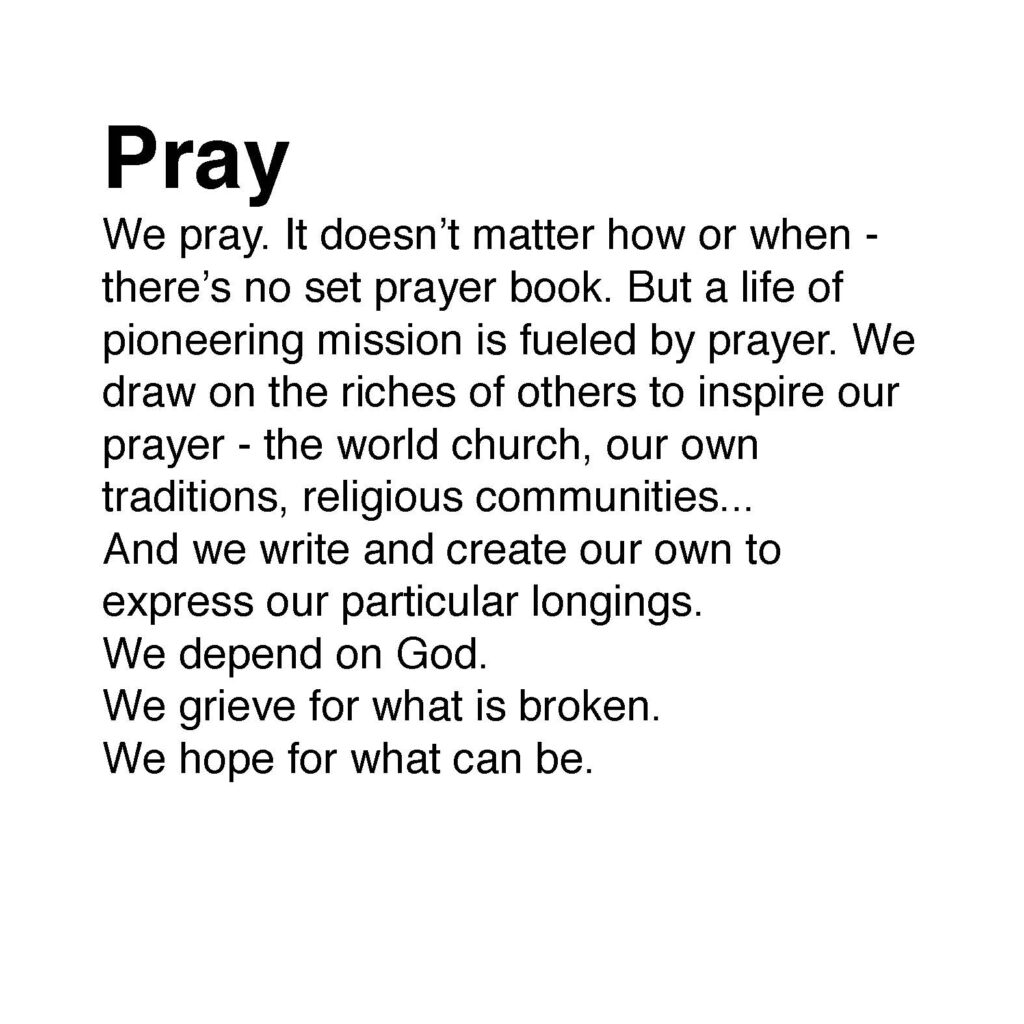
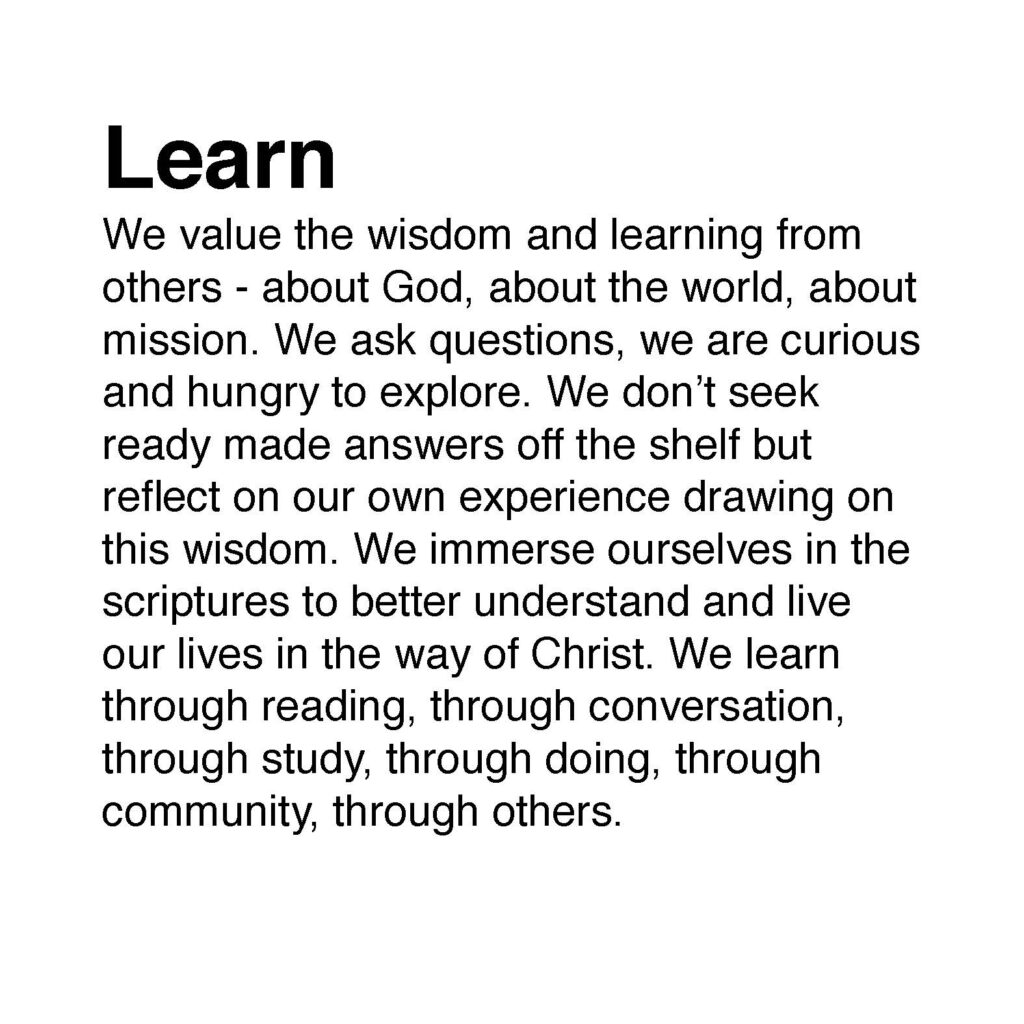
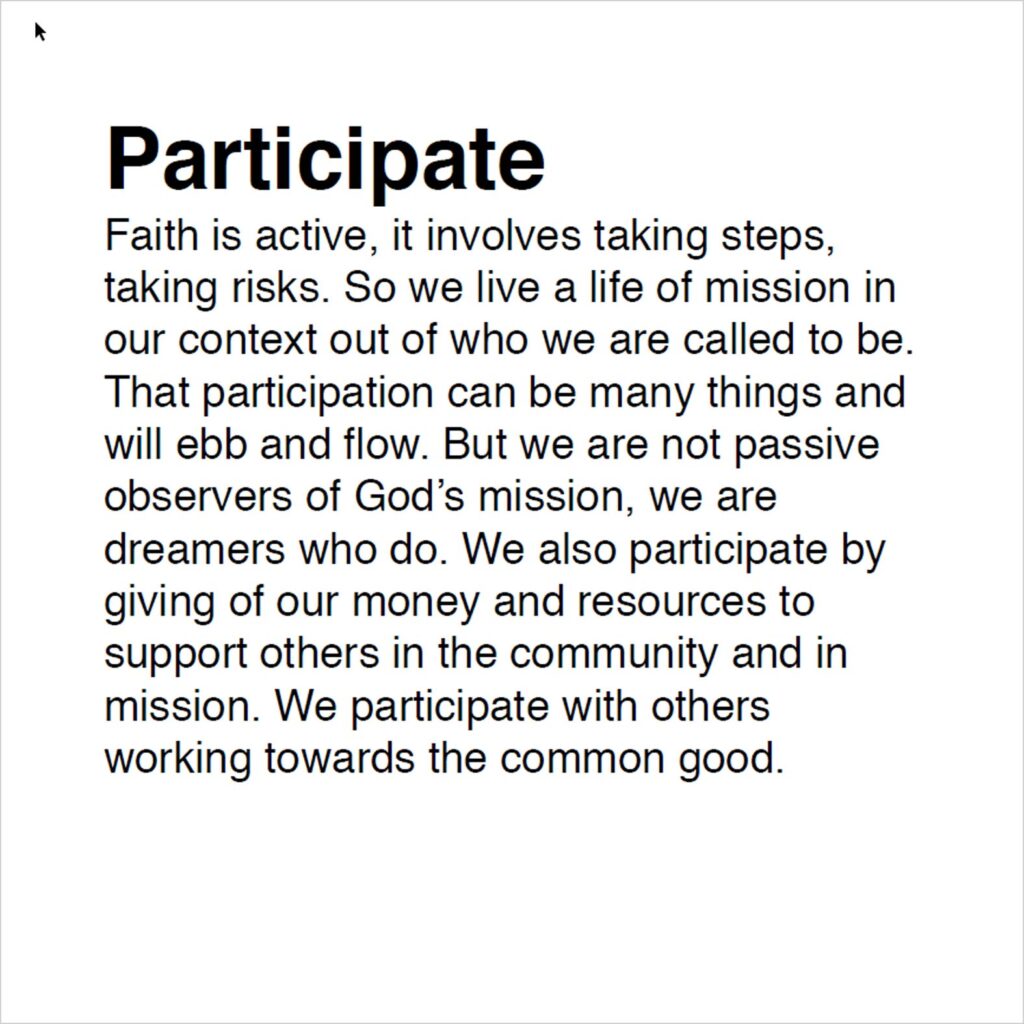
Download the orginal version of True North as a PDF.
You can read all the original posts in full on Jonny’s blog.